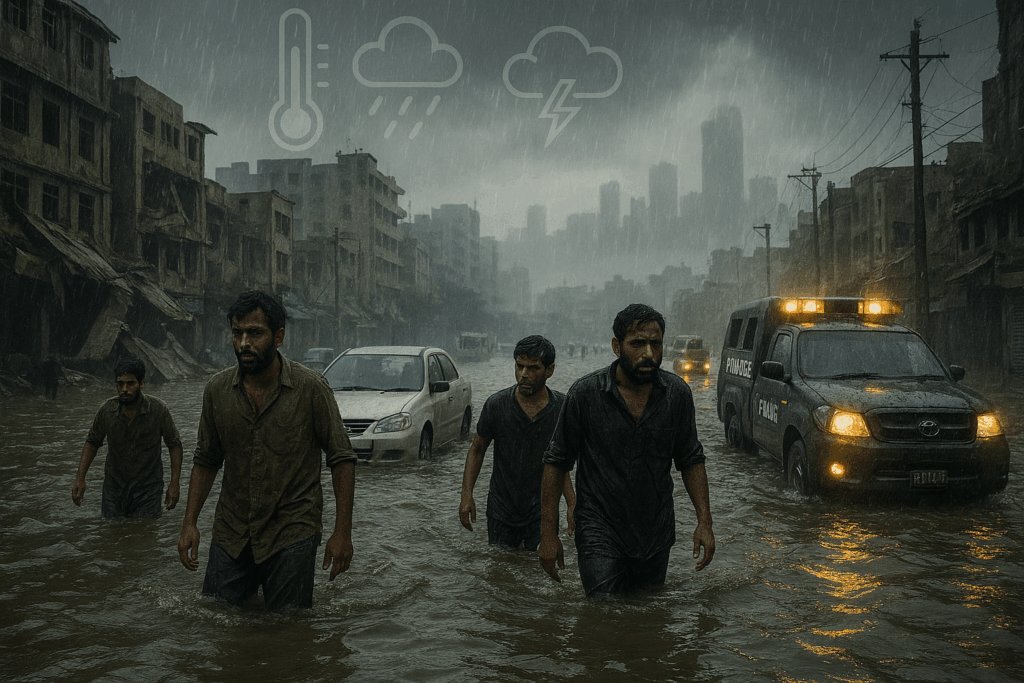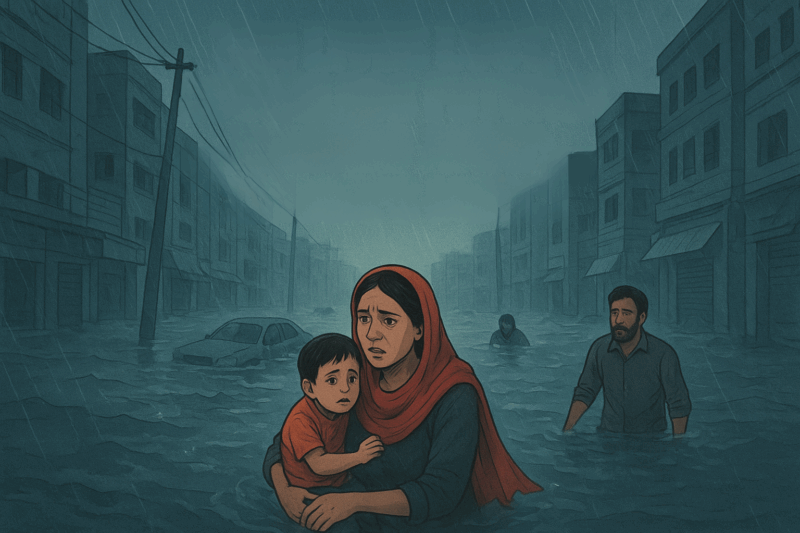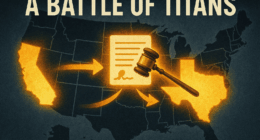Karachi woke up this week to a city remade by water. Torrential monsoon rain turned arteries into rivers, stranded families in their own homes, and silenced much of Pakistan’s financial capital. Authorities ordered businesses, schools and public offices to shut on Wednesday, as floodwaters, traffic gridlock, and power cuts made normal life impossible. It wasn’t a passing shower; it was a shock to the system. Reuters
The human cost mounted quickly. At least 10 people lost their lives in Karachi—deaths linked to drowning, road accidents, building collapses and electrocution—while emergency teams, police and volunteers fanned out across submerged neighborhoods to pull people to safety. Behind each statistic is a family interrupted: parents wading chest-deep to find food, children sleeping in damp rooms, elders waiting for medicines that can’t get through. Reuters
The numbers tell a stark story. Around the airport, 163.5 mm of rain was recorded—the highest there since 1979—and 178 mm fell in parts of the northeast of the city, the most since that gauge was installed five years ago. Karachi’s mayor put it plainly: the city’s drainage can handle about 40 mm; beyond that, it spills into streets and homes. No wonder cars floated like toys on major thoroughfares and entire blocks went dark as power and mobile services faltered. Reuters
This is not an isolated disaster—it is part of a bruising monsoon across Pakistan. The National Disaster Management Authority has counted more than 750 monsoon-related deaths nationwide since late June, with the mountainous northwest hammered by flash floods from sudden cloudbursts. That broader backdrop matters: Karachi’s crisis sits inside a season of grief stretching from hilltop villages to coastal plains. Reuters+1
Climate risk is the thread running through these scenes. Scientific assessments following Pakistan’s catastrophic 2022 floods found that human-driven warming made extreme monsoon rainfall more likely and more intense. Warmer air holds more moisture; when that moisture unloads over dense cities or fragile slopes, the result is exactly what Karachi and the northwest have endured: overwhelming downpours, deadly flash floods, cascading infrastructure failures. Pakistan’s own climate reports flag the country among the most climate-vulnerable nations, with flooding and heat among the top threats. World Weather AttributionUNFCCC

We have seen how this story can escalate. In 2022, floodwaters affected about 33 million people, displaced nearly 8 million, and inflicted over $30 billion in damages and economic losses—an expensive reminder that recovery without resilience only resets the clock to the next crisis. Karachi’s week of water is a warning that adaptation is not optional; it’s the price of survival. thedocs.worldbank.orgWorld Bank
What would “climate-proofing” look like in practice for a city of 20+ million? It starts with the unglamorous: upsizing storm drains, clearing encroachments on natural waterways, and enforcing building codes that keep basements and electrical systems out of harm’s way. It includes early-warning systems and hyperlocal rainfall monitoring, so residents don’t learn about danger only when it’s already at the door. And it demands grid resilience—from better substation siting to rapid, safe power restoration—so blackouts don’t compound the peril during rescues. None of this is simple. All of it is cheaper than reliving this week, again and again.
For Karachi, the rain will pass. The grief won’t, not soon. The choice ahead is whether we treat these floods as freakish interruptions—or as the new baseline in a warming world. If it’s the latter, then “business as usual” becomes an act of forgetting. The city that powers Pakistan deserves better than memory loss. It deserves the investments, rules, and foresight that allow families to watch the monsoon arrive with caution—not fear.
Karachi is not at the mercy of the climate alone. It’s at the mercy of whether we prepare for the climate we now have. Reuters
“As record-breaking rains drown Karachi, the city’s struggle is no longer against water alone—it’s a fight for survival in a climate that won’t wait.”





